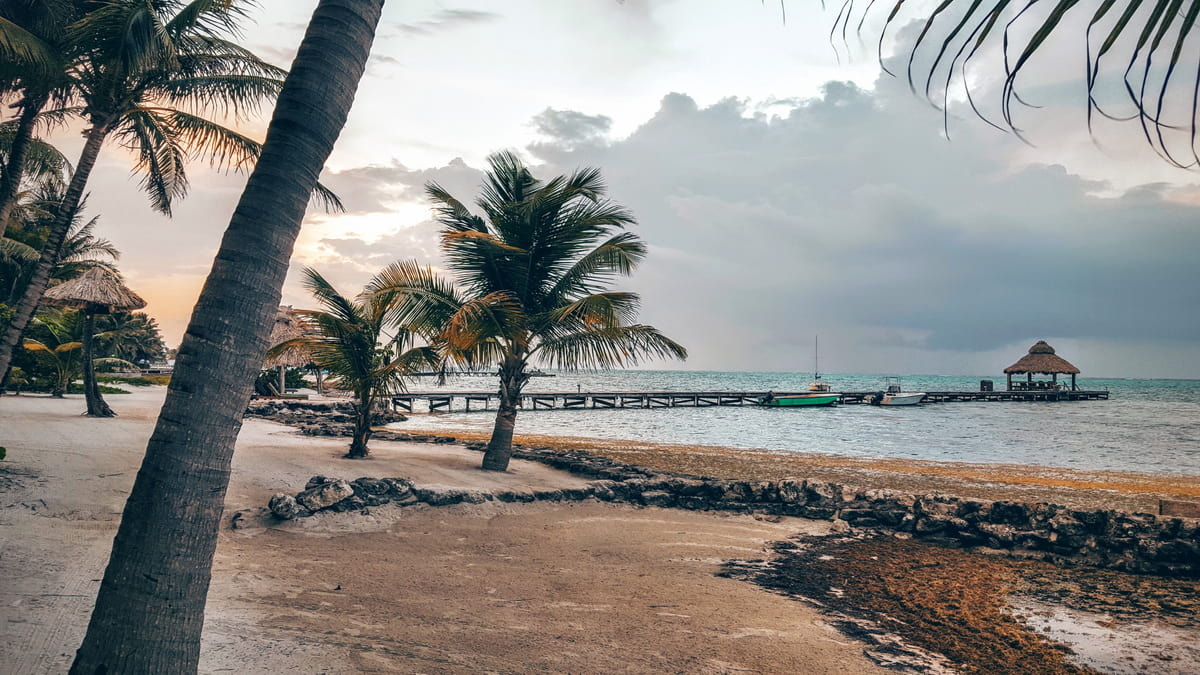Belize, a shimmering gem nestled in the arms of Central America, has always captivated souls with its enchanting diversity, both culturally and ecologically. With a population that elegantly weaves a tapestry of ethnicities, and landscapes that leap from vibrant reefs to whispering jungles, Belize presents a paradise rife with stories, adventures, and a staggering array of fun facts to explore.
Our journey through 35 fun facts about Belize promises to take you on a wild ride through this small country’s mighty offerings, unmasking not just the well-trodden tourist spots, but also diving deep into the unexplored, yet equally mesmerizing facets of Belize.
1. The Only Jaguar Preserve
The Cockscomb Basin Wildlife Sanctuary, established in 1986, serves as the globe’s singular jaguar preserve, sprawling over an imposing 150 square miles of tropical forest in Belize. Stepping inside, one can almost hear the whispered tales from the depths of this vibrant jungle, which provides a sanctuary to approximately 200 jaguars. Dr. Alan Rabinowitz, a zoologist whose studies significantly influenced the foundation of the preserve, admired not only the cat’s prowess but also Belize’s innovative approach towards conservation.
Dive deeper into the sanctuary, and beyond the alluring eyes of jaguars, the forest also harbours over 290 species of birds and a spectrum of other wildlife, making it an absolute haven for biologists and conservationists.
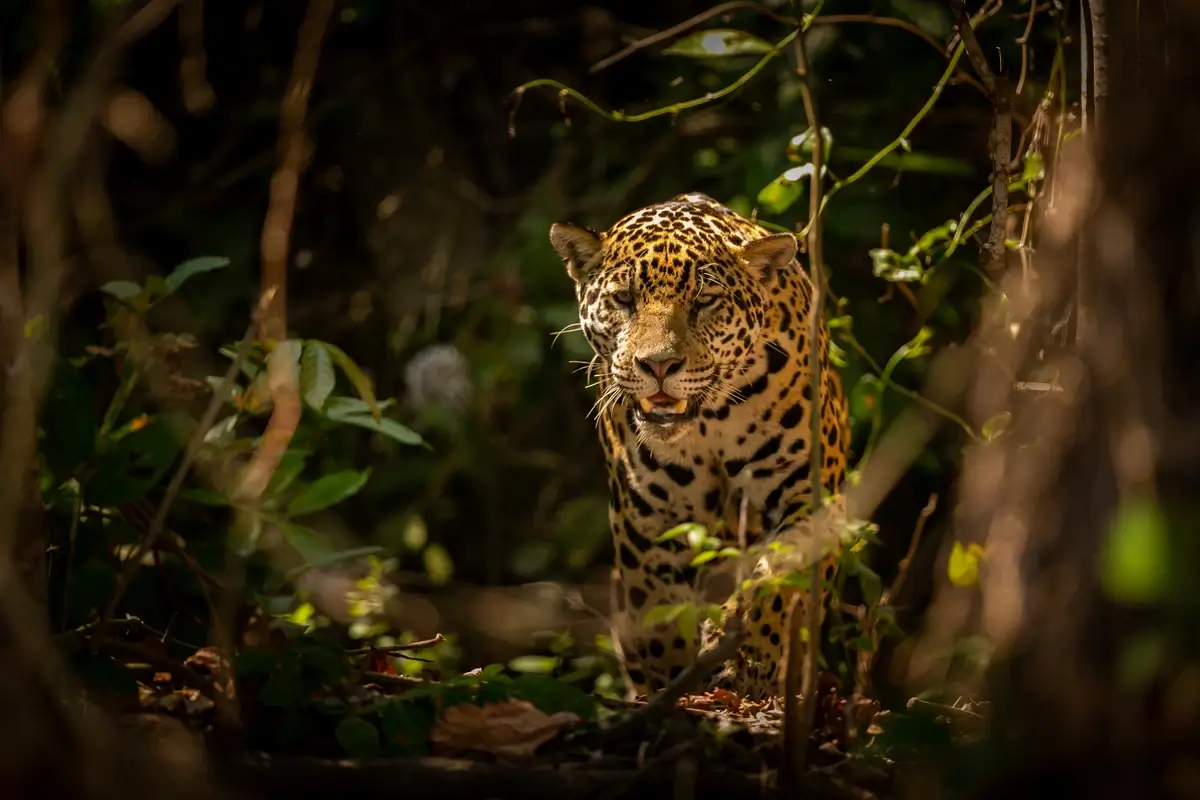
Image by vladimircech / Freepik
2. A Stroll Through Placencia Sidewalk
Listed by the Guinness World Records, Placencia Sidewalk in the enticing village of Placencia prides itself as the “World’s Narrowest Main Street”. But let’s stroll back a bit in time – this delightful walkway was initially constructed as a means for fishermen to traipse through the village without the sandy hassles. Intriguing, isn’t it? This 4,071-foot-long (1.24 km) sidewalk now is not just a path but a vibrant display of Belizean culture.
The sidewalk orchestrates a lively symphony where local vendors, artisans, and residents create a melody that sings the true, unfiltered tale of Placencia, complete with vibrant stalls, indigenous crafts, and the wafting aromas of traditional Belizean cuisine.
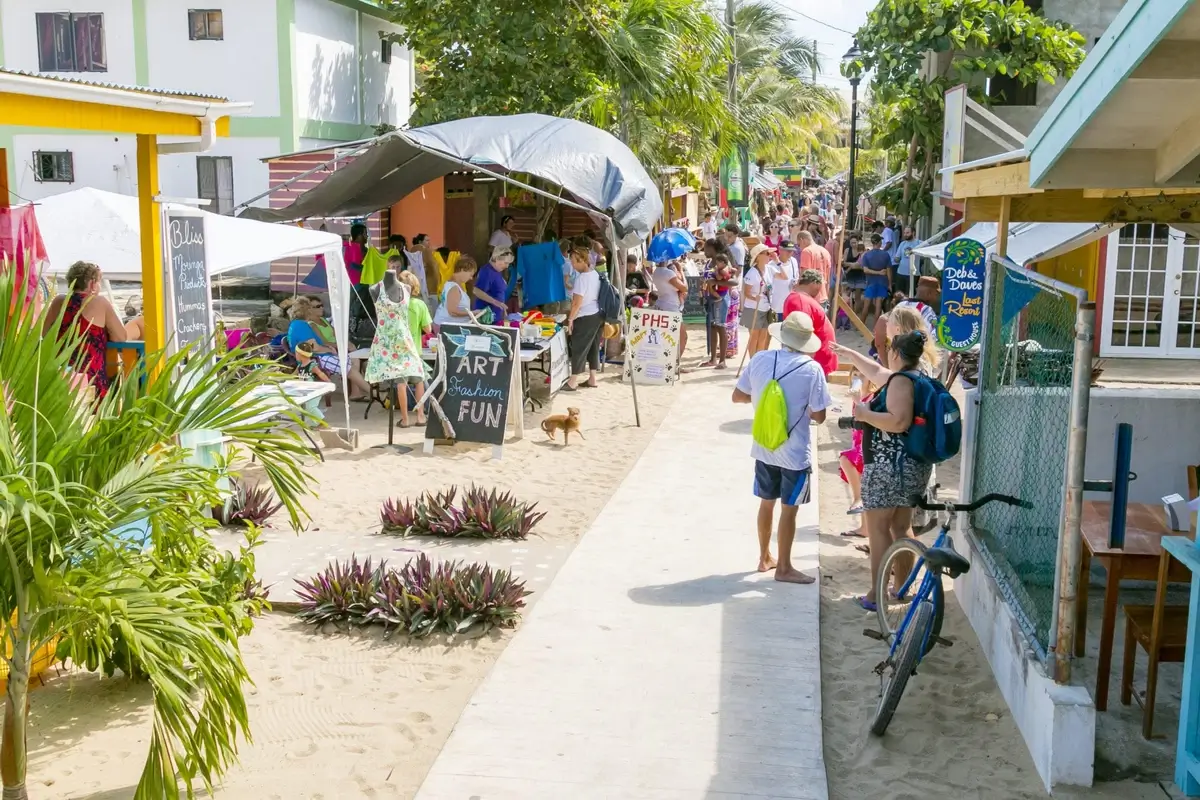
Image source: caribbeanlifestyle.com
3. A Royal Retreat: The Belize Barrier Reef
Let the waves carry you to the Belize Barrier Reef, the second largest of its kind on Earth, surpassed only by Australia’s Great Barrier Reef. Designated a UNESCO World Heritage Site in 1996, it’s a vivacious underwater domain sprawling over 370 kilometers, which cradles almost 70 hard coral species, 36 soft coral species, 500 species of fish, and hundreds of invertebrate species.
History mingles with the ocean currents here, as the reef safeguards submerged caves and over 1,000 shipwrecks. The renowned Great Blue Hole, part of this marine masterpiece, draws divers from around the world, not just for its azure charm, but also its geological allure, being a striking example of a karst limestone sinkhole.
4. Mingling with Manatees: A Sea Cow Sanctuary
Ah, the gentle manatee, often dubbed the “sea cow,” has found a serene haven in the crystal-clear waters of Belize. The Swallow Caye Wildlife Sanctuary, established in 2002, arises as a beacon of conservation, specifically tailored to protect these amiable marine giants. Historically, the manatee population faced significant threats from coastal development and boat traffic, but it was the persistent efforts of Lionel “Chocolate” Heredia, a conservationist, that sculpted this sanctuary.
By 2023, approximately 1,000 manatees found refuge in Belizean waters, the highest in the region. This spectacular fact not only shines a spotlight on successful conservation efforts but also provides an enchanting opportunity for visitors to silently observe these aquatic herbivores in a natural, undisturbed environment.
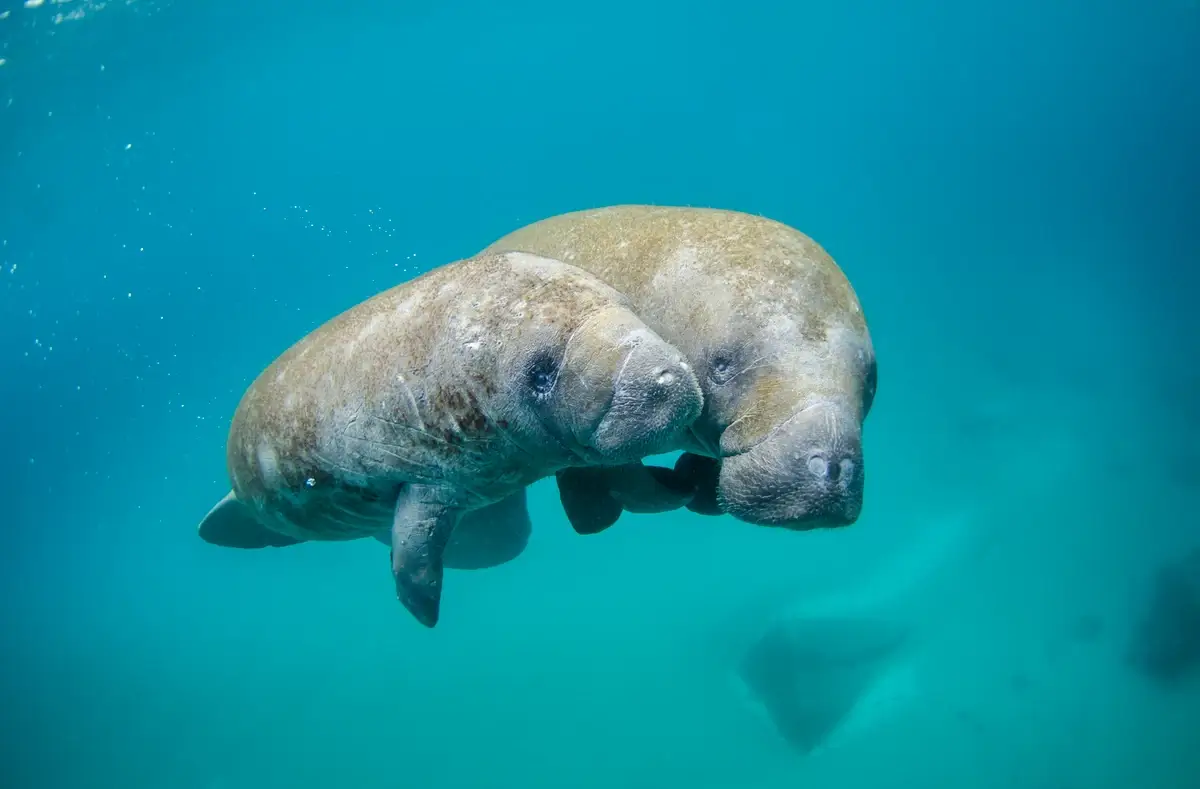
Image source: porthole.com
5. Reveling in September: A Month of Celebration
September in Belize isn’t just a month; it’s a euphoric celebration, pulsating with vibrancy, national pride, and an infectious jubilant spirit. This is a spectacular reflection of the nation’s road to independence, officially achieved on September 21, 1981. Today, the entire month brims with exhilarating festivities, namely the Carnival Road March, an explosion of colors, and the soul-stirring sounds of soca and calypso music, connecting it deeply to its Caribbean roots.
The historical undertone amplifies on September 10th, recognized as St. George’s Caye Day, commemorating a pivotal victory in 1798, where Baymen defenders thwarted a Spanish invasion, a surprising fact considering their numerical inferiority and limited resources, that subtly echoes in the merriment of modern celebrations.

Image source: travelbelize.org
6. In Sync with the Garifuna Rhythms
The Garifuna, an Afro-Caribbean community, infuse Belize with a unique cultural rhythm, recognized and celebrated by UNESCO. Having roots in both African and Indigenous Carib cultures, the Garifuna people arrived in Belize around 1802, their history and presence serving as a pulsating heartbeat that enlivens the nation’s cultural landscape.
Visitors are often enchanted by the mesmerizing Garifuna drum rhythms, a melodic language that speaks tales of history, resistance, and unity, creating an integral thread in Belize’s cultural tapestry. The lively and symbolic dance, Punta, finds its origins in Garifuna traditions and can enchant anyone into moving with its infectious beats.
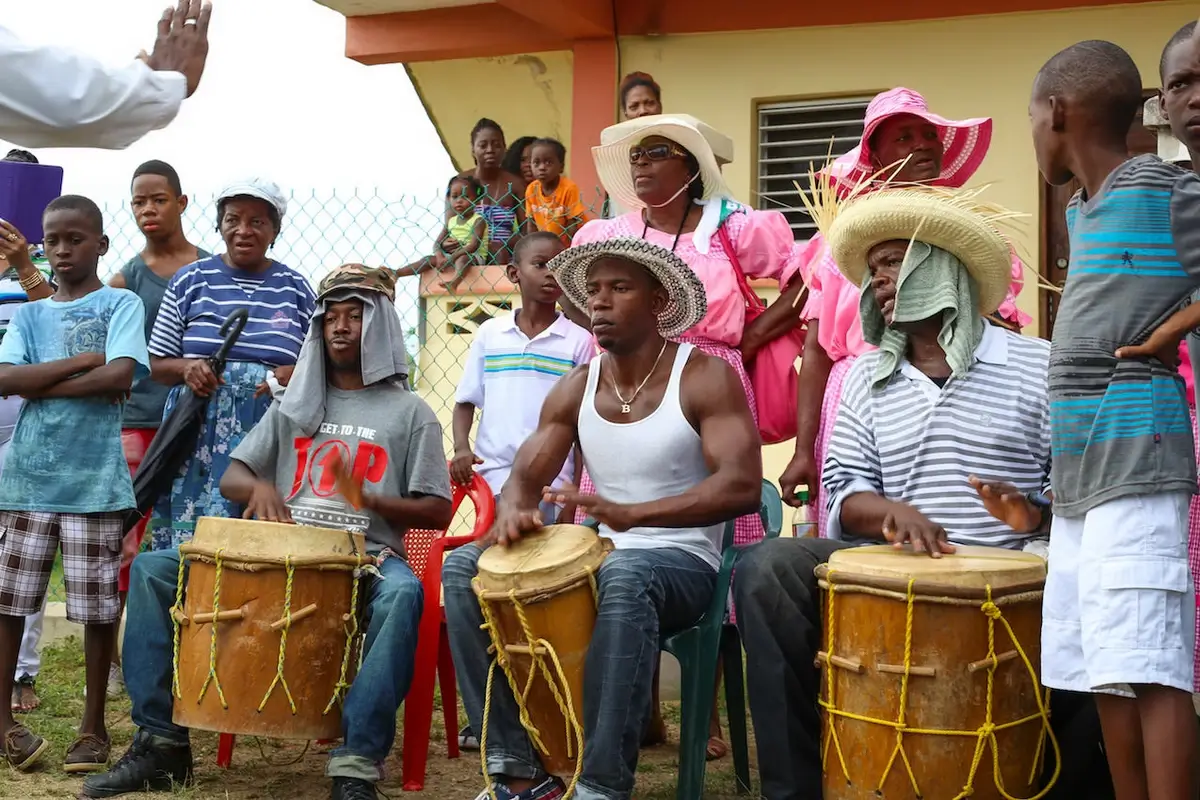
Image source: islandexpeditions.com
7. Unearthly Mysteries of the ATM Cave
Step into the Actun Tunichil Muknal (ATM) Cave, and you’re greeted by an eerie silence, broken only by the distant droplets of water, whispering tales of a civilization long gone. Discovered in the late 1980s, the ATM Cave, located in the Tapir Mountain Nature Reserve, presents an archaeologically significant site, cradling relics and skeletal remains from the Maya civilization, specifically a crystallized skeleton, dubbed “The Crystal Maiden.”
Recent research suggests that the Mayans used this cave during the Terminal Classic Period (around 700-900 AD), primarily for ceremonial purposes, perhaps in times of drought, seeking favor from the rain god, Chaac. A journey here isn’t just an adventure; it’s a temporal slide into ancient beliefs, practices, and life.
8. Exploring the Mayan Majesty: Xunantunich
Perched on a verdant hill overlooking the Mopan River, the ancient Mayan city of Xunantunich (pronounced shoo-nahn-too-neech) stands as a testament to a civilization that once meticulously observed the cosmos and forged its destiny amidst the dense jungles of Central America. Estimated to have been a prominent Mayan civic ceremonial center during the Classic Period (around 600-1000 AD), Xunantunich, meaning “Stone Woman” in the Mayan language, unfurls tales of mythology, power, and astronomical precision in its architecture.
Within these ancient ruins, El Castillo, the second tallest structure in Belize, carves a monumental silhouette against the sky, once serving not only as a political and spiritual nexus but also an astronomical observatory. The friezes adorning its walls narrate stories of gods and kings, beautifully entwining divine and royal narratives into stone.
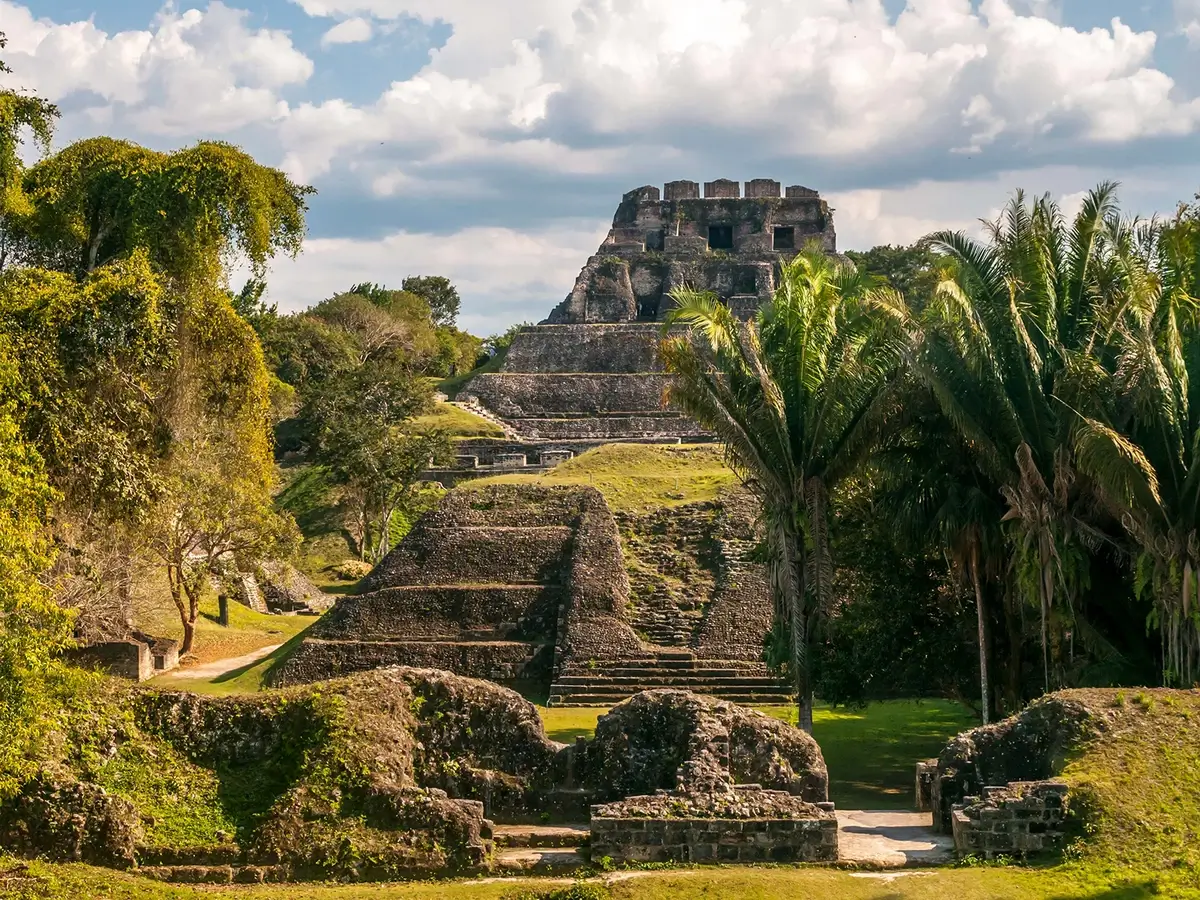
Milos Kubus
9. A Culinary Odyssey: Rice and Beans
A mélange of flavors simmering together, Belizean Rice and Beans isn’t merely a dish; it’s a culinary odyssey through the very soul of this Central American country. This humble, yet profoundly flavorful, dish threads through the nation’s multicultural tapestry, combining the culinary heritage of the Creole and Garifuna people. Traditionally cooked with coconut milk, the dish attains a rich, creamy texture and a subtle, yet captivating, nuance that is irresistibly Belizean.
Historically, the amalgamation of rice and beans in a single pot speaks not only to the practicality of creating hearty meals but also symbolizes the intertwining of various cultural influences to create a cohesive, national identity. A plate of rice and beans, often accompanied by chicken, fish, or other proteins, narrates a tale of unity through diversity.
10. Belmopan: World’s Smallest Capital by Population
In the heart of Belize, lies Belmopan, a capital that might surprise many with its unique distinction. Sprawling across just over 16 square miles, it holds the title of being one of the world’s smallest capitals in terms of population. But why such a petite capital for Belize?
The answer traces back to Hurricane Hattie in 1961, which devastated Belize City, the then-capital. To avoid future vulnerabilities, the government decided to build a new capital, safe from sea storms and sea level rise. Established in 1970, Belmopan was strategically located inland, with its master plan designed by British architects. Today, its compact nature and strategic design make it a unique and intriguing heart of a nation, encapsulating both the resilience and forward-thinking approach of Belize.
11. A Tropical Paradise for Butterflies
Step into a kaleidoscope of colors as you explore the Butterfly Farms of Belize, home to countless fluttering wings, each telling a story of transformation and delicate beauty. Belize, with its vibrant ecosystems, plays host to approximately 700 species of butterflies, with the iridescent Blue Morpho being a celebrated icon, often associated with the spirit world in Mayan lore, adding a spiritual layer to its physical allure.
Researchers and conservationists have dedicated immense effort to not only preserving these delicate creatures but also understanding their migration patterns, lifecycle, and role within Belize’s diverse ecosystems. For travelers and nature enthusiasts, the butterfly farms offer not merely a visual feast but an intimate glance into the intricate webs of life weaving through Belize’s lush landscapes.
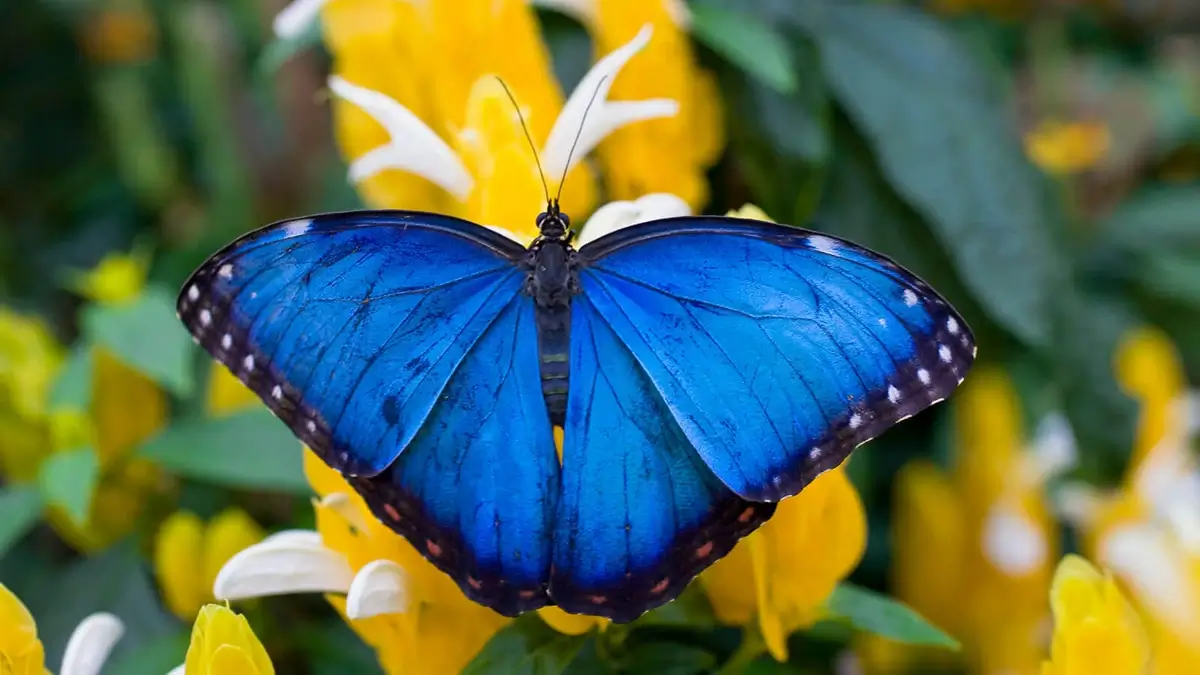
Image source: cahalpech.com
12. Hitch a Ride with the Tapirs
The delightful spectacle of tapirs gallivanting through the jungles of Belize offers not only a glimpse into the vibrant wildlife of this small country but also a peek into conservation efforts brimming within its boundaries. The Baird’s tapir, often affectionately dubbed the “mountain cow” in Belize, is a curious creature that stirs intrigue with its peculiar, almost prehistoric appearance and its gentle, docile demeanor.
Despite their slightly awkward, albeit charming, appearances, tapirs play a vital role in maintaining ecological balance. They are known as “gardeners of the forest,” contributing to seed dispersal and thus, aiding in forest regeneration. In Belize, organizations like the Belize Zoo and the Tapir Project are pivotal in conservation, research, and uplifting the status of the Baird’s tapir from ‘endangered’ to ‘vulnerable.’
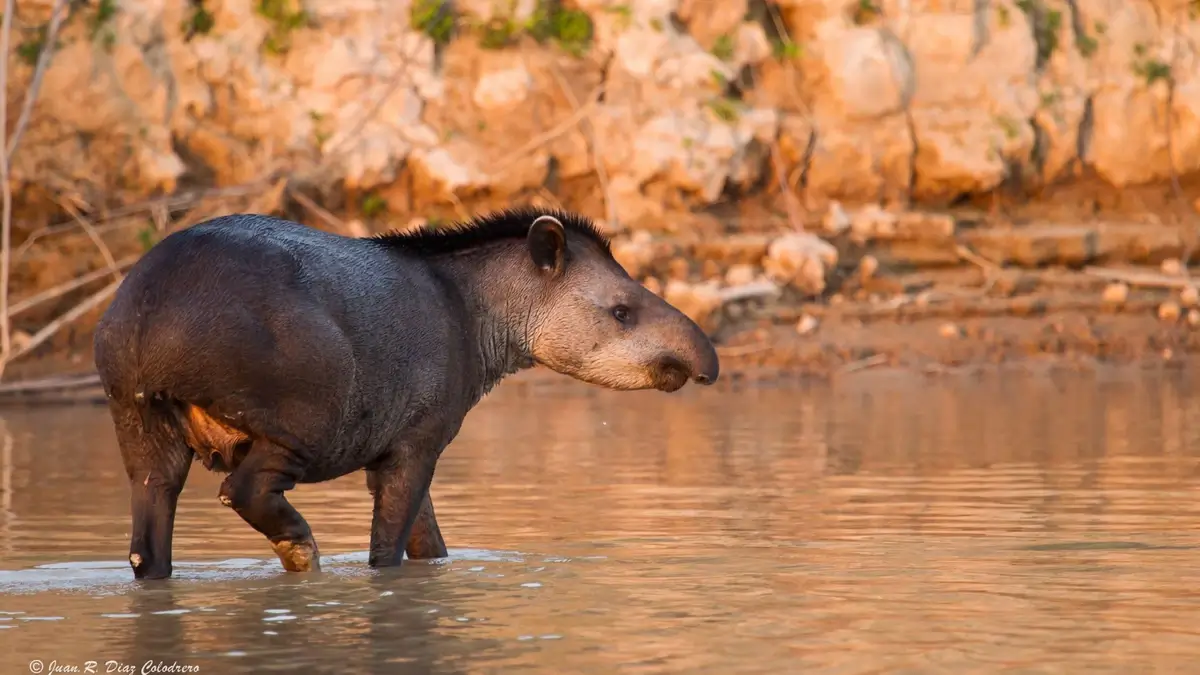
Image source: nationalgeographic.com
13. A Dive into the Great Blue Hole
Imagine plunging into a sapphire abyss, where the ocean cradles mysteries of the ancient, submerged world below. The Great Blue Hole, a giant marine sinkhole off the coast of Belize, is one of the most illustrious dive sites in the world, fascinating divers and marine scientists alike with its staggering depth of 124 meters and its unique geological formations.
Not merely a dive site, the Great Blue Hole is a window into the geological and climatic tales of our planet. Stalactites found within this submarine chasm have offered researchers insights into historical climate patterns, and the hole itself, part of the larger Belize Barrier Reef Reserve System, is a UNESCO World Heritage Site, symbolizing the delicate balance and harmony existing within oceanic realms.
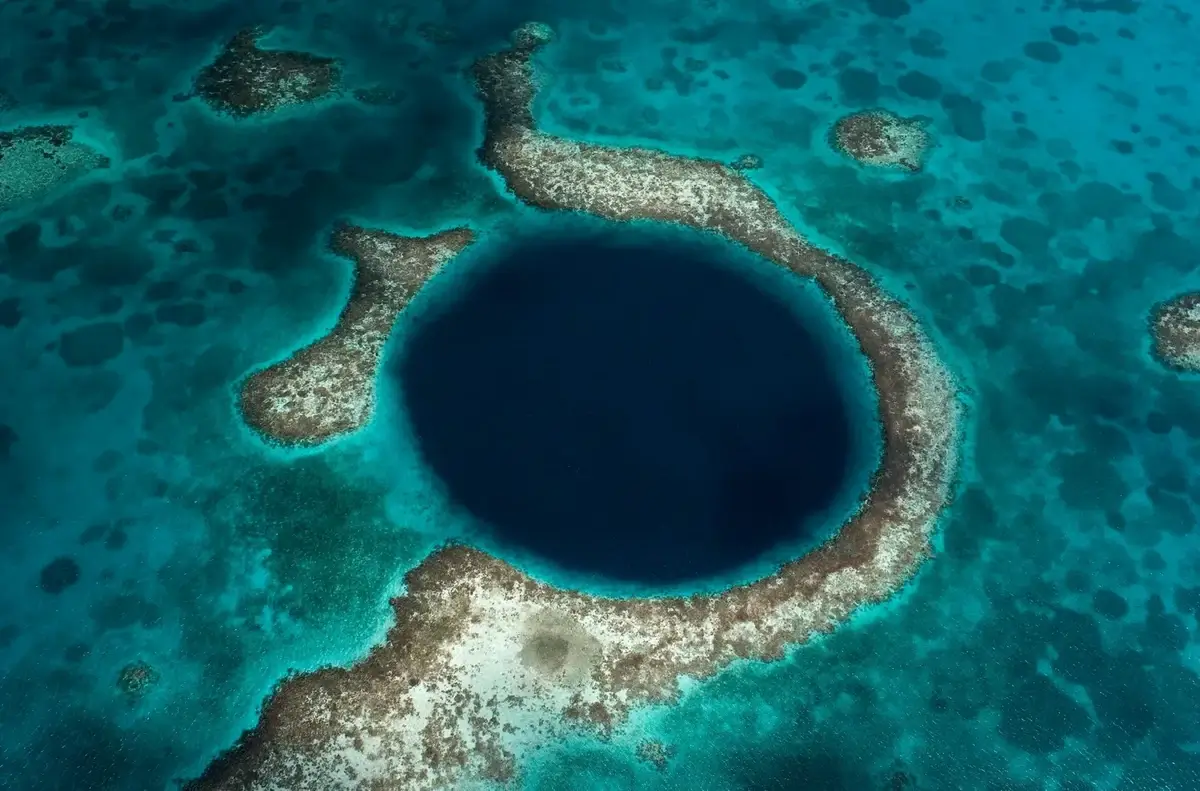
Image source: smithsonianmag.com
14. Hearty Cheers with Belizean Beers
Belize may be petite in geographical stature, but it pours a tall glass of vibrancy, especially through its local beers. Boasting a brewing history that mingles tradition with innovation, Belizean beers, notably Belikin Beer, have cascaded through the nation’s history, becoming synonymous with its cultural and social tapestry. Brewed by the Belize Brewing Company, Belikin, derived from the Mayan language meaning ‘Road to the East,’ has quenched the nation’s thirst since 1969.
Whether it’s a social gathering, a quiet evening by the Caribbean, or a hearty celebration, Belizean beers have washed through numerous occasions, offering not just a refreshing gulp but also a taste of the country’s jovial spirit and camaraderie. So, here’s raising a glass to the effervescence bubbling through Belize’s local life and culture.
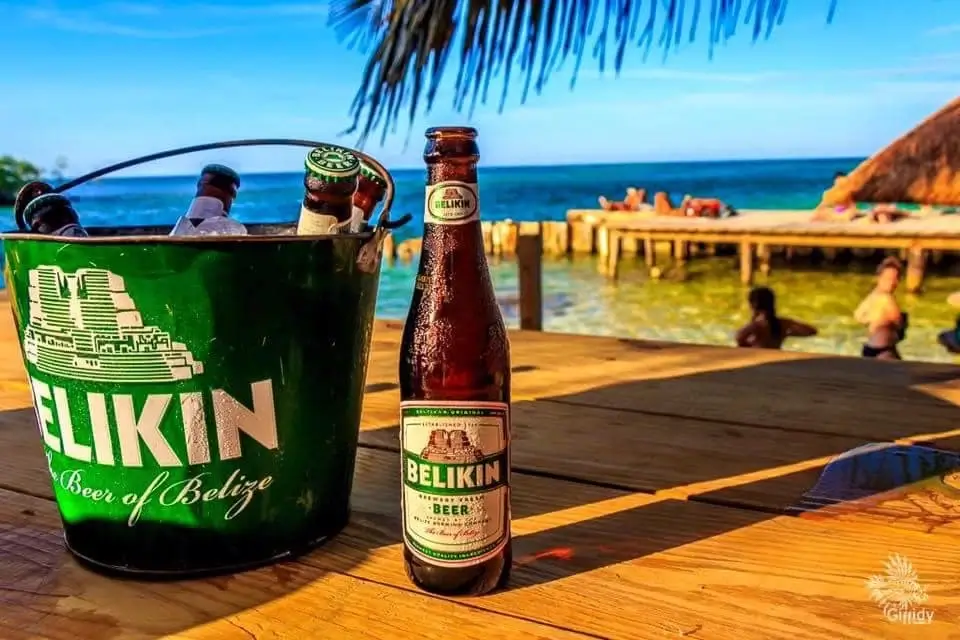
Image source: goslowcayecaulker.com
15. Sneak Peek at the Snake Cayes
A slither of islands tucked within the gentle embrace of the Caribbean, the Snake Cayes are a set of four islands that punctuate the southern waters of Belize, each offering a distinct tale of ecology, conservation, and serene isolation. Not to worry, despite their name, these cayes are not overrun by serpents but were named for a species of boa once common on one of the islands.
Nestled within the Port Honduras Marine Reserve, the Snake Cayes are a melange of rich marine life, thriving mangrove ecosystems, and tranquil, unspoiled landscapes. These cayes have been significant in various research and conservation initiatives, offering insights into coral reef health, mangrove ecology, and sustainable development practices within marine reserves.
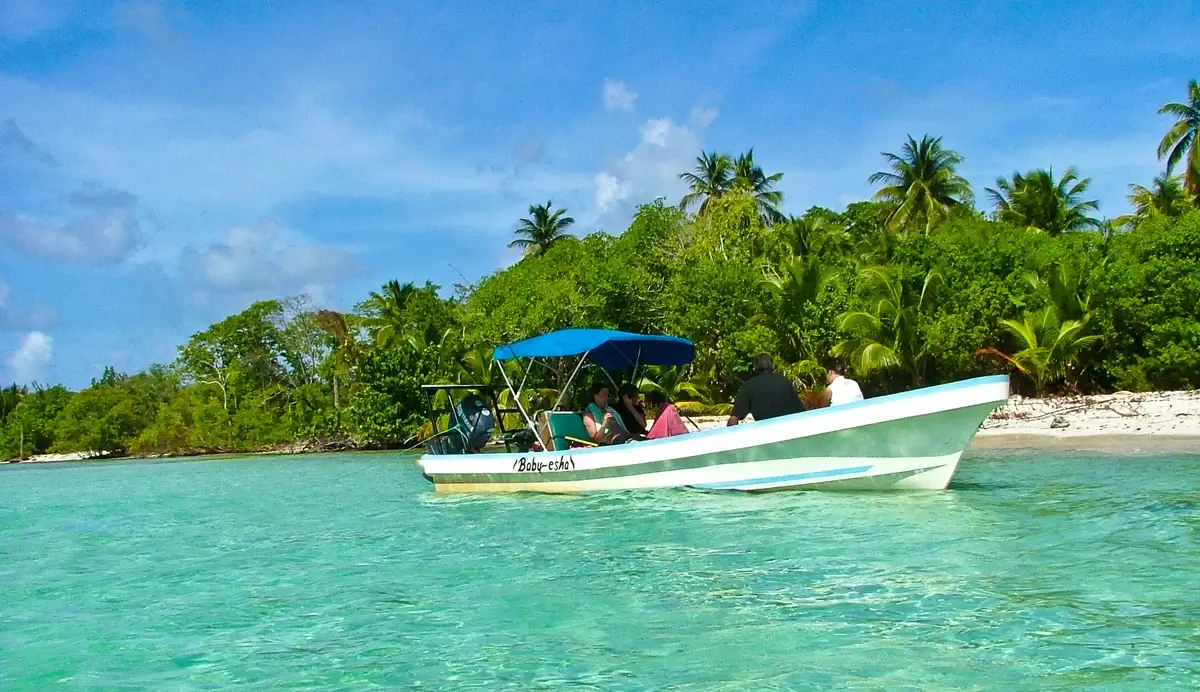
Image source: belizehub.com
16. A Testament to Tolerance: Religious Freedom
In the heart of Central America, ensconced amidst vibrant jungles and azure coasts, lies Belize, a small country that harbors a monumental spirit of tolerance and unity. Its fabric of religious freedom is not merely a statutory law but a lived reality, where various faiths mingle, coexist, and flourish without the shadow of coercion or strife. Churches, mosques, and temples cohabit harmoniously within this Caribbean haven.
An enthralling tale from the 1800s speaks volumes about Belize’s intrinsic spirit of religious tolerance. The Methodists, the Garinagu (Garinagu is plural; Garifuna is the individual or the language), Catholics, and a plethora of other faiths found a haven in Belize, where their practices were not merely tolerated but celebrated, crafting a rich mosaic of spiritual and cultural diversity that continues to define Belize today.
17. Speaking in Tongues: Multilingual Belize
Step into Belize and you’re embraced by a cacophony of languages that weave through the social and cultural tapestry of this Central American country. English may be the official language, but the linguistic landscape here is anything but monolingual. Creole, Spanish, Garifuna, Maya, and German, amongst others, lace through the Belizean air, crafting a melodic symphony that resonates with unity in diversity.
This rich linguistic diversity isn’t merely a cultural phenomenon but a window into Belize’s complex history and its tapestry of indigenous roots, colonial imprints, and a continuous intertwining of various ethnicities and cultures. The multitude of tongues spoken here is a testament to its capacity to embrace and uphold varied cultural identities, making it a fascinating study for linguists and cultural enthusiasts alike.
18. Pineapples & Penal Codes: Unique Laws
In Belize, the law often takes an unconventional approach, weaving cultural traditions and practical reasoning into its legal fabric. For instance, while it may sound whimsical, Belize actually has a law that prohibits the possession and potential use of catapults. This quirky rule might be seen as a light-hearted take on governance, but it underscores a serious commitment to maintaining social order.
Furthermore, Belize’s laws regarding pineapples are not just about the fruit but reflect the country’s broader efforts to protect its natural and cultural heritage. Pineapples, being a tropical produce, play a significant role in Belize’s agricultural sector. The specific regulations around them are designed to safeguard local farming practices and ensure sustainable cultivation.
Such laws may appear playful at first glance, but they reveal a deep intertwining of Belize’s cultural beliefs and legislative practices. Belize’s legal framework, therefore, is not just about enforcing rules but also about preserving the nation’s unique societal and cultural identity.
19. Ambling through the Ancient Caracol
Nestled within the embrace of Belize’s verdant Chiquibul Forest Reserve lies Caracol, an ancient Mayan city that has whispered tales of power, astronomy, and warfare through the centuries. Enigmatic yet deeply entwined with Belize’s historical and cultural framework, Caracol is an archaeological jewel that sprawls over 168 square kilometers, once rivaling the might of powerful cities like Tikal in its heyday around 650 AD.
The towering Sky Palace of Caracol, exuding regality even in its ancient, weather-beaten state, provides not merely a panoramic view of the surrounding reserve but also a vertiginous peek into the socio-political and astronomical prowess of the Maya civilization. The intricate stelae, ball courts, and astronomical observatories mirror a civilization that was deeply entwined with the cosmos, warfare, and the ebbs and flows of power and diplomacy.
20. Spotting the Elusive Jaguarondi
Embark on an adventure into Belize’s lush forests, where amidst the foliage, the elusive jaguarondi moves like a shadow, a flicker in the green, creating a buzz among wildlife enthusiasts and researchers. This small, otter-like wildcat is not just a fascinating creature to behold but also a symbol of the robust marine life and biodiversity cradled within this small country.
Belize’s commitment to conservation, illustrated through various preserves and wildlife corridors, extends a protective embrace around creatures like the jaguarondi, ensuring their secretive lives continue to perplex and enchant us. The jaguarondi’s almost mythical status among local tales and its adept survival tactics in the wild are captivating subjects for anyone seeking to peer into the secretive lives of this Central American mystery.
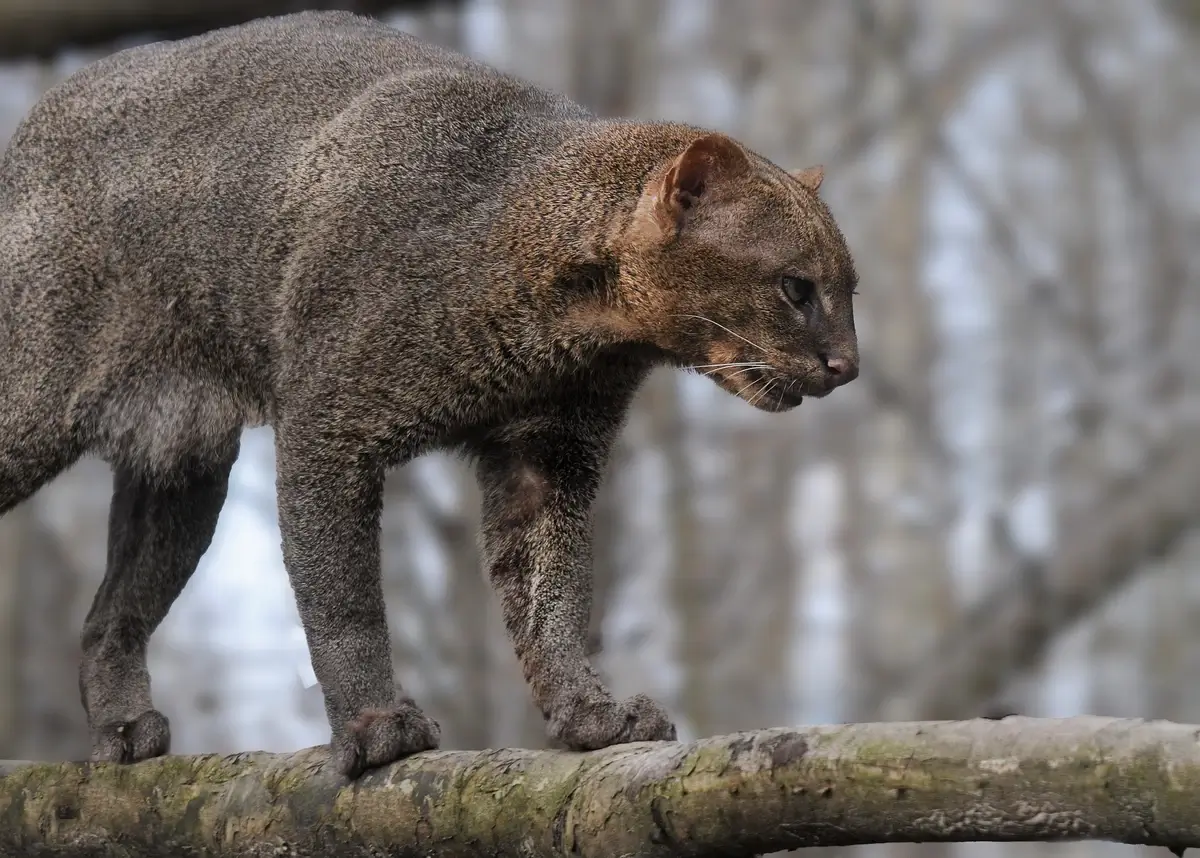
Image source: tunturisusi.com
21. Unmasking the Garifuna Settlement Day
November 19th in Belize isn’t merely a date; it’s an effervescent celebration of culture, identity, and the indomitable spirit of the Garifuna people. Garifuna Settlement Day is not only a public holiday but a riveting spectacle where history, music, dance, and culinary arts fuse into a vibrant celebration. It’s a nod to the arrival of the first Garifuna to Belize in 1802, uniting the nation in a pulsating rhythm of celebration and respect.
Every beat of the drum, every sway, and vibrant color during this celebration is a testament to the Garifuna’s rich history, their struggles, and triumphant spirit. A meandering journey through the events of this day provides a kaleidoscopic view into their unique traditions, languages, and the unyielding resilience that has preserved their cultural heritage through generations. While you revel in the rhythmic beats of the Garifuna drums and lose yourself in the vibrant parades, remember, this is not merely a festivity but a proud, resilient echo of a rich, undulating history and culture.
22. Sail the Sea of Seven Colors
Beneath the Belizean sky, the Siete Colores, or the Sea of Seven Colors, unfurls like a mesmerizing aquatic rainbow. Situated around the breathtaking San Pedro Island, this marvel is not just a visual spectacle but also a rich cradle of varied marine life and coral splendor. The seven distinct shades of blue, attributed to the varied depths and the coral reef formations beneath, craft a visual melody that’s both enchanting and ecologically significant.
The depths of this colorful sea harbor vibrant reefs, a kaleidoscope of fish species, and fascinating underwater landscapes, making it a diver’s paradise. But, beyond the aesthetic and recreational allure, the Sea of Seven Colors stands as a reminder of the delicate, intrinsic beauty and the ecological significance harbored within our world’s oceans and seas.
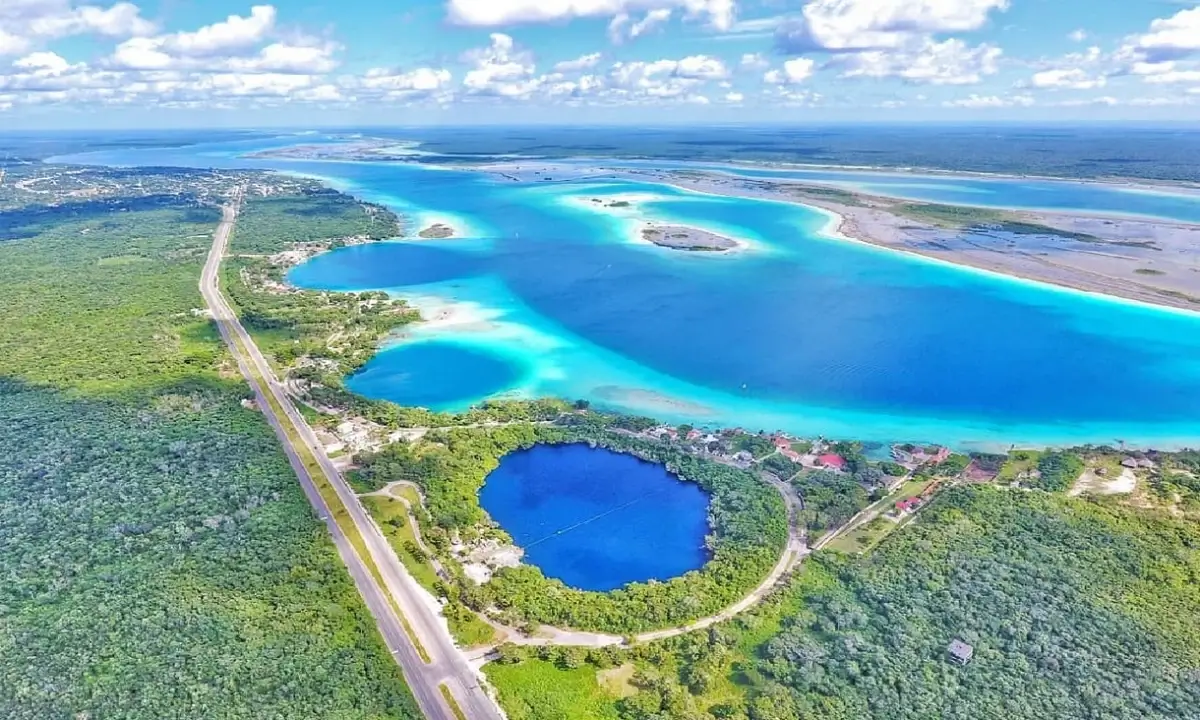
Image source: descubreenmexico.com
23. The Vibrancy of Belizean Kriol Culture
Beyond the azure waves and verdant jungles of Belize lies the beating heart of its identity – the Belizean Kriol culture. Sprouting from African and European roots, Kriol culture is an exhilarating blend of traditions, languages, music, and history. The Kriol, making up about a quarter of Belize’s population, have significantly influenced its linguistic tapestry. Belizean Creole, an English-based creole language, is spoken fluently by over half the population and resonates with traces of its rich heritage and varied influences.
Dive deeper, and you’ll discover the Brukdown, a traditional Kriol musical genre, with its pulsating rhythms that tell tales of the Kriol history, their daily lives, and their indomitable spirit. Engulfed in the Kriol culture, one doesn’t merely observe a tradition but feels the vibrancy, resilience, and soul of Belize.
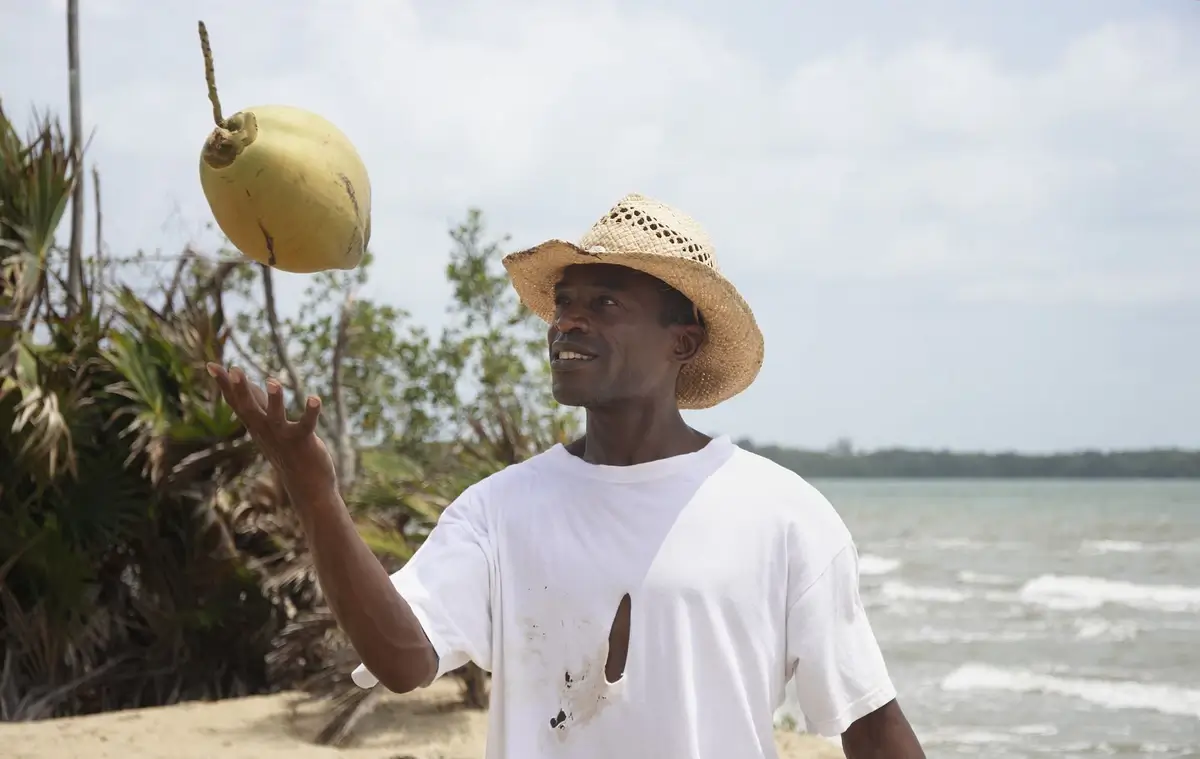
Image source: blackorchidresort.com
24. Marvel at the Majestic Harpy Eagle
Belize’s canopies echo with the haunting calls of one of the most powerful raptors in the world – the harpy eagle. With talons as long as a bear’s claws and an imposing wingspan, this bird of prey is truly a sight to behold. Primarily found in the dense rainforests, the harpy eagle has become symbolic of Belize’s robust ecosystem and conservation efforts.
Historically, the Mayans revered this majestic creature, associating it with the sun god and the celestial world. Today, its presence serves as both a beacon of the wild, untamed spirit of Belize’s jungles and an indicator of the health and vibrancy of its ecosystems.
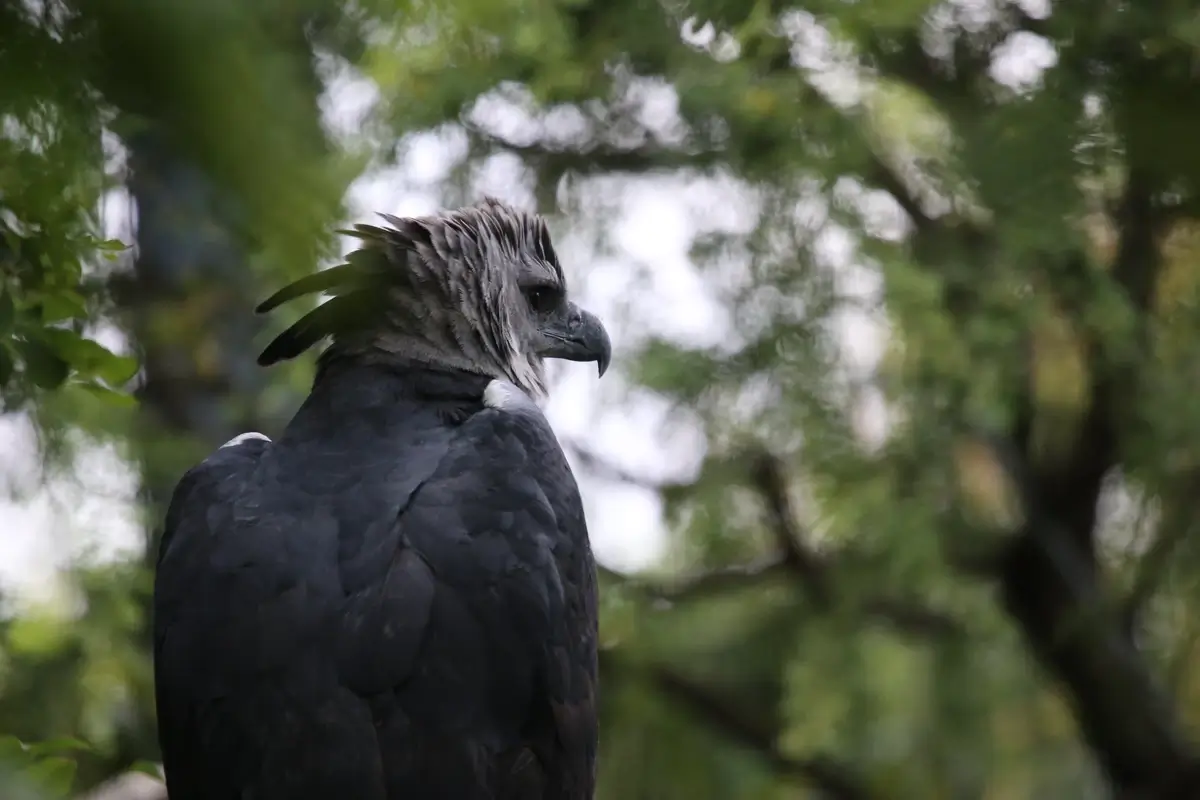
cuatrok77 / Flickr
25. Bask in the Breezy Caye Caulker
A slice of paradise floating amidst the azure Caribbean waters, Caye Caulker is Belize’s breezy island retreat. A mantra of “Go Slow” resonates on this island, urging visitors to bask in the unhurried, tranquil vibes. With its sandy streets, pastel-colored buildings, and endless horizons, Caye Caulker is not just a destination but an experience.
Apart from its serene beauty, the island also stands as a testament to Belize’s commitment to eco-tourism. Vehicles are notably absent here, replaced by bicycles and golf carts. The Barrier Reef, just a short boat ride away, offers stunning snorkeling and diving sites, making Caye Caulker a perfect blend of relaxation and adventure.
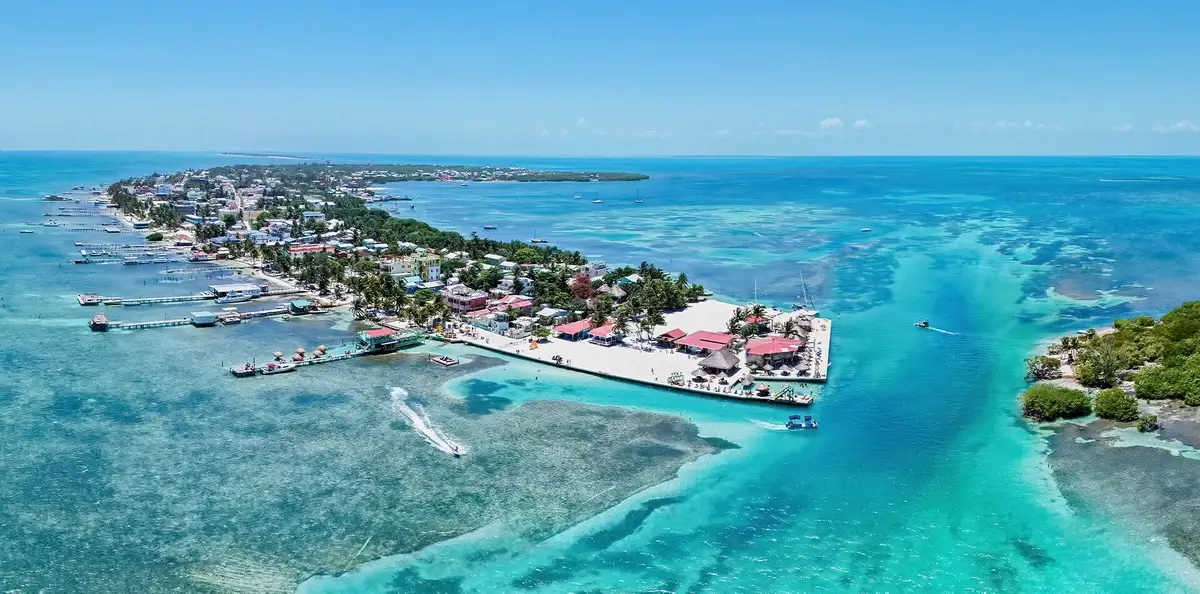
Image source: btia.org
26. From Sapodilla to Sailing: A Journey
Nestled in the Caribbean waters, the Sapodilla Cayes beckon with their pristine beaches and rich marine biodiversity. These islands, forming a significant part of Belize’s marine reserve, are noteworthy sites for snorkeling and diving enthusiasts. Their significance magnifies as they shelter a part of the expansive Mesoamerican Barrier Reef System, hosting an array of marine species.
While Sapodilla offers an underwater paradise, Belize’s coasts are also alive with the sails of boats catching the wind. Sailing is not just a pastime here; it’s a tradition. Regattas, local boat races, and the esteemed Ruta Maya Belize River Challenge showcase the nation’s adoration for the art of sailing.
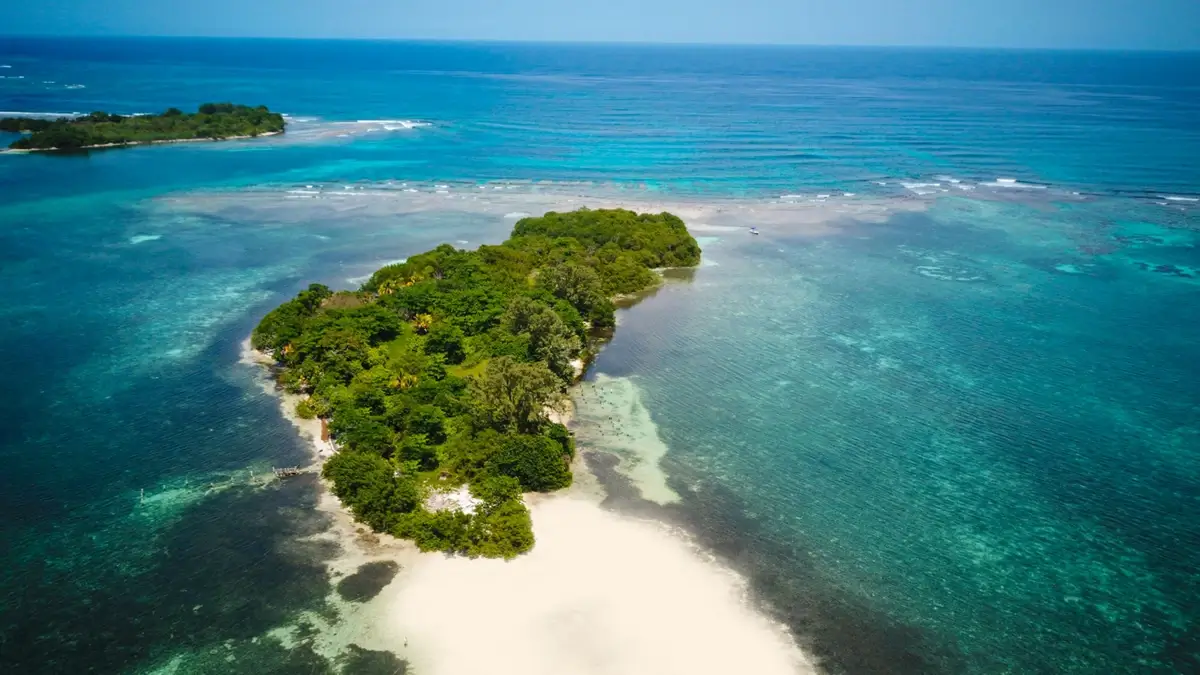
Image source: privateislandsonline.com
27. A Walkthrough Punta Gorda Town
Punta Gorda, fondly known as PG, serves as the southernmost town in Belize. With its laid-back vibe and multicultural populace, it’s a melting pot of Mayan, Garifuna, East Indian, and other cultures. This town is more than its scenic beauty; it’s a testament to Belize’s rich tapestry of traditions and customs.
Farmers’ markets here brim with local produce and traditional crafts, offering visitors a tactile experience of Belizean life. Punta Gorda also acts as a gateway to the nearby cayes and serves as a starting point for numerous inland adventures, including cacao farm tours, reflecting the region’s significance in chocolate production.
28. Historical Puzzles of the Lamanai Ruins
Lamanai, which means “submerged crocodile” in Mayan, stands tall amidst Belize’s northern rainforests, narrating tales of the ancient Mayan civilization. Being one of Belize’s largest archaeological sites, it spans a colossal 950 acres. But its size isn’t its only marvel; Lamanai’s significance lies in its continuous occupation, which outlasted many other Mayan cities.
From the Mask Temple, adorned with a 13-foot stone mask of an ancient Mayan king, to the High Temple, offering panoramic views of the surrounding landscape, Lamanai is a treasure trove of archaeological wonders and a direct window into the intricate world of the Mayans.
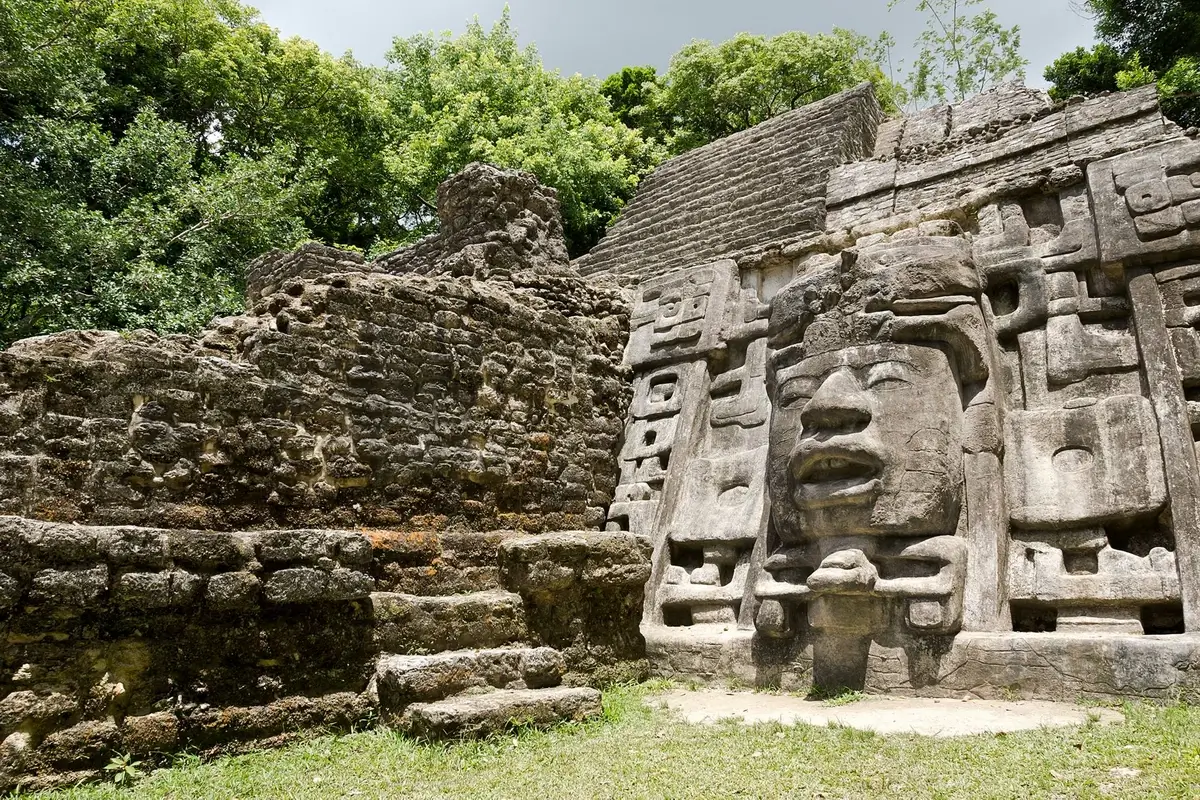
Image source: cahalpech.com
29. The Artistry of Belizean Mennonite Community
Amidst Belize’s diverse cultural spectrum, the Mennonite community shines with its distinct traditions and contributions. Originally hailing from Europe, these pacifists settled in Belize during the 1950s. Dressed in their traditional attires, often seen riding horse-drawn buggies, they paint a vivid picture of old-world charm against Belize’s tropical backdrop.
But, there’s more to them than just tradition. Renowned for their exemplary agricultural skills, they significantly contribute to Belize’s agricultural output. Their mastery over carpentry is also quite visible in the furniture market. A fusion of age-old traditions with modern techniques, the Mennonite community exemplifies a harmonious blend of past and present.
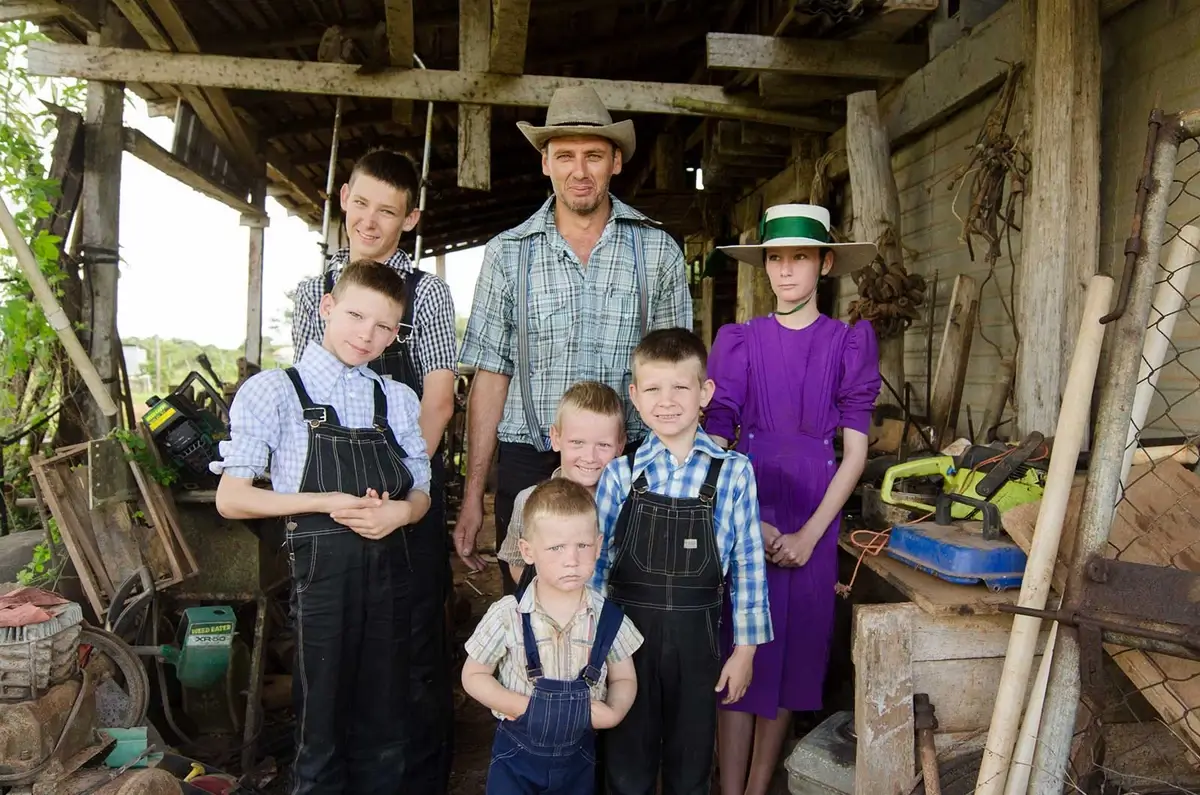
Image source: elgranmestizo.bz
30. Journey to the Top: Victoria Peak
Rising 3,675 feet above sea level, Victoria Peak isn’t just Belize’s second-highest mountain but also an emblem of natural grandeur. Part of the Cockscomb Range located in the Stann Creek District, it beckons trekkers with its challenging terrains and mesmerizing vistas. This natural monument offers an invigorating 4-day trek that winds through tropical forests, providing a firsthand experience of Belize’s rich flora and fauna.
The ascent, though demanding, rewards climbers with panoramic views of verdant rainforests, the Caribbean Sea, and a plethora of endemic plant species. A trek to Victoria Peak isn’t just about scaling heights but about experiencing nature’s symphony in every step.

Image source: caribbeanlifestyle.com
31. A Dive into Sublime Shark Ray Alley
Tucked within the mesmerizing blue expanse of the Hol Chan Marine Reserve, Shark Ray Alley promises a dive that’s thrilling and awe-inspiring. Once a popular spot for local fishermen to clean their catch, it now magnetizes nurse sharks and stingrays, offering divers and snorkelers an unparalleled underwater spectacle.
As you dive or snorkel, the sight of docile nurse sharks and majestic stingrays gliding past creates memories that last a lifetime. Swimming alongside these magnificent marine creatures, in the crystalline waters of Belize, epitomizes an underwater fantasy come alive.
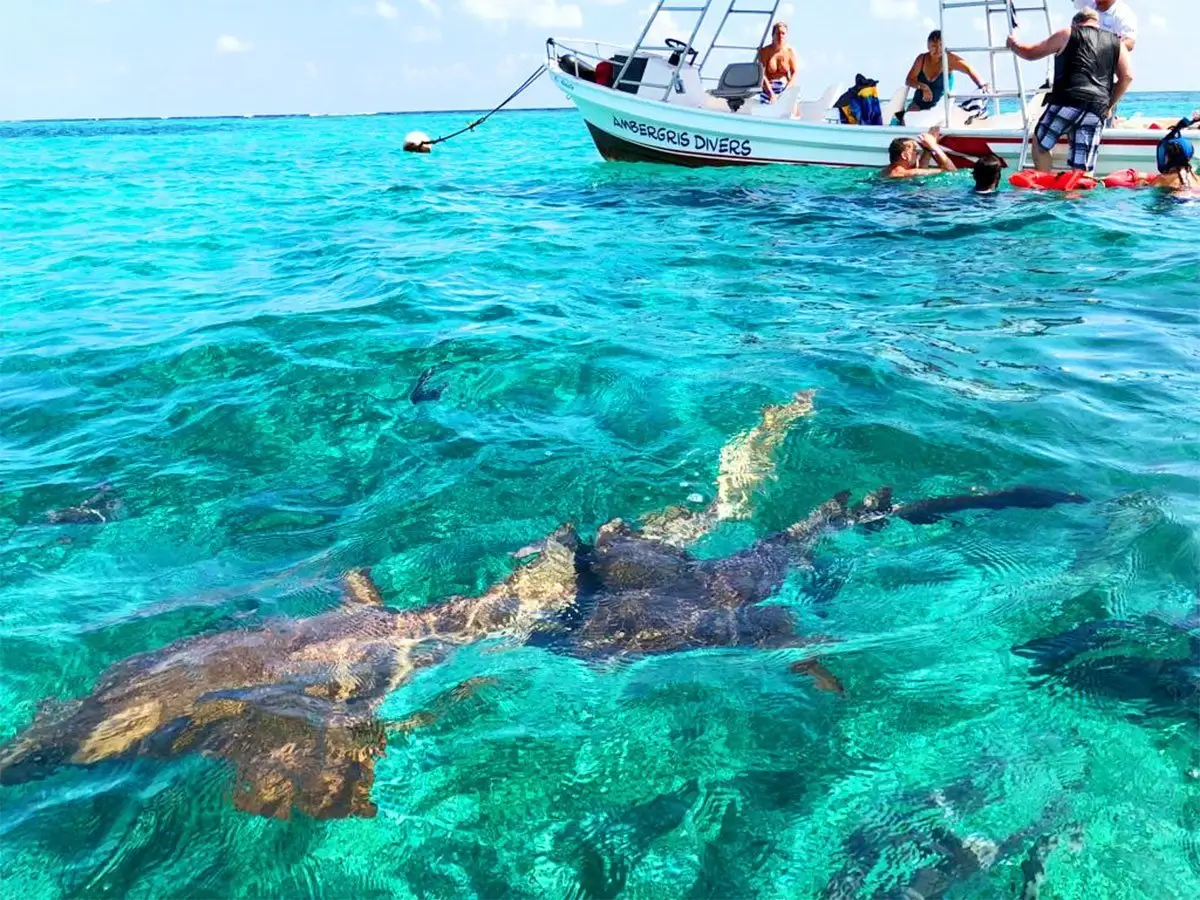
Image source: ambergrisdivers.com
32. Tickling Tastebuds with Tamales
A gastronomic journey through Belize would be incomplete without savoring its traditional Tamales. Steamed to perfection inside plantain or banana leaves, these Mesoamerican delights are made from masa (a doughy mixture from maize) stuffed with a medley of fillings, ranging from chicken, pork to vegetables. Often accompanied by a savory sauce or salsa, Tamales represent a fusion of Mayan culinary artistry and modern Belizean flavors.
Every bite tells a story of centuries-old culinary traditions, family gatherings, and the Belizean spirit of celebration. They’re not just food; they’re an edible tapestry of history and culture.

Image source: belizenewspost.com
33. A Peek into the Past: Colonial Architecture
Strolling through the streets of Belize City, one can’t help but be transported back in time, courtesy of its striking Colonial architecture. These structures, remnants of the British colonial era, narrate tales of a bygone epoch. With their distinctive wooden designs, gingerbread moldings, and airy verandas, these edifices stand as silent testimonies to Belize’s historical legacy and the influences that shaped its urban landscapes.
The Supreme Court Building and St. John’s Cathedral are quintessential examples, reflecting the grandeur of British architectural styles amalgamated with tropical adaptations. A walk amidst these buildings is not just about admiring the aesthetics but understanding the layers of Belize’s past.
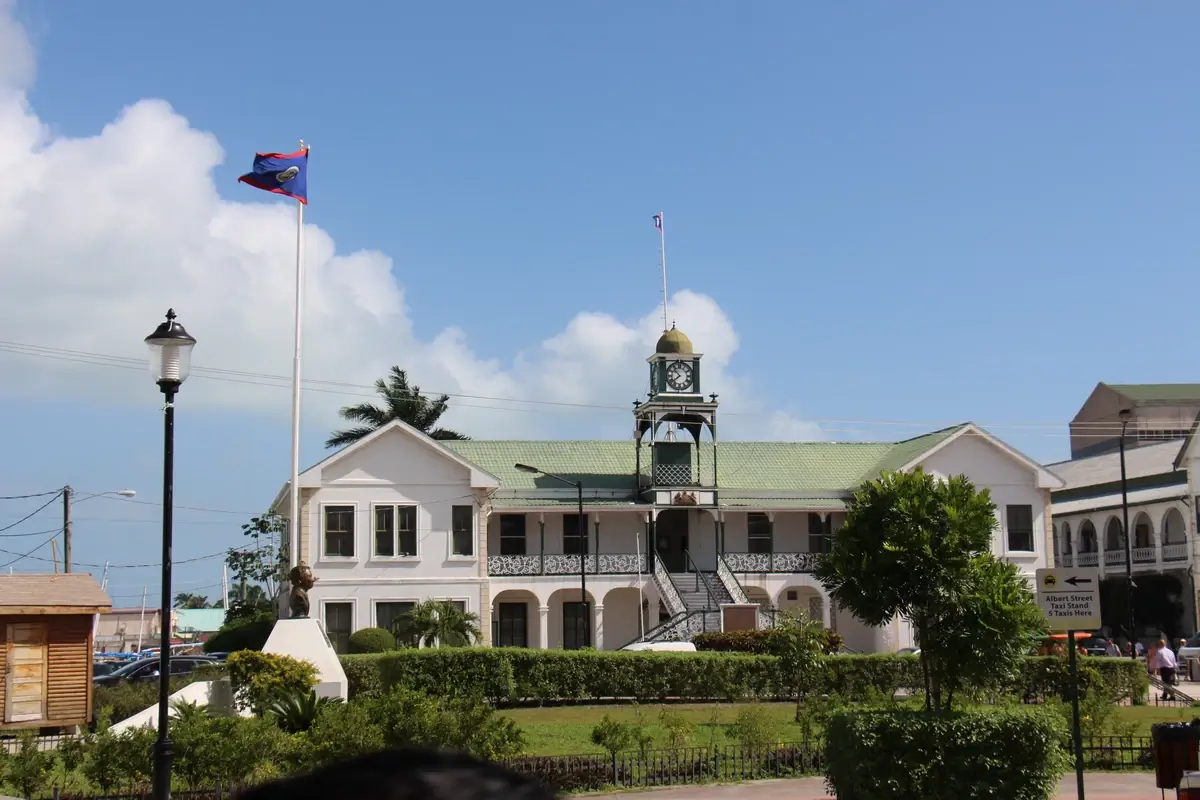
Connie / Flickr
34. Exotic Flavours at the Chocolate Festival
In the picturesque town of Punta Gorda, every May, there’s a sweet symphony in the air, resonating with the notes of cacao. The Chocolate Festival of Belize is not just an event; it’s an ode to one of the most cherished crops of the region: cacao. Celebrating the ancient Mayan roots of chocolate making and its modern-day significance in Belizean culture and economy, this festival is a chocoholic’s dream.
From traditional Mayan chocolate-making demonstrations to contemporary chocolatiers showcasing their craft, it’s a sensory fiesta. The tantalizing aroma, paired with live music and cultural performances, crafts an ambience that’s truly magical.
35. Flaming Fervor: Spotting the American Flamingo
The serene lagoons and salt flats of Belize serve as more than just picturesque landscapes; they’re the beloved abode of the resplendent American Flamingo. With their signature pink hue, a result of their diet rich in beta-carotene, these birds add a splash of color to the Belizean biodiversity.
Once at the brink due to hunting, focused conservation efforts within Belize have fostered a resurgence in their numbers. Birdwatchers and nature lovers flock to areas like the Crooked Tree Wildlife Sanctuary to witness these avian wonders in their natural habitat, gracefully foraging or wading through the waters.
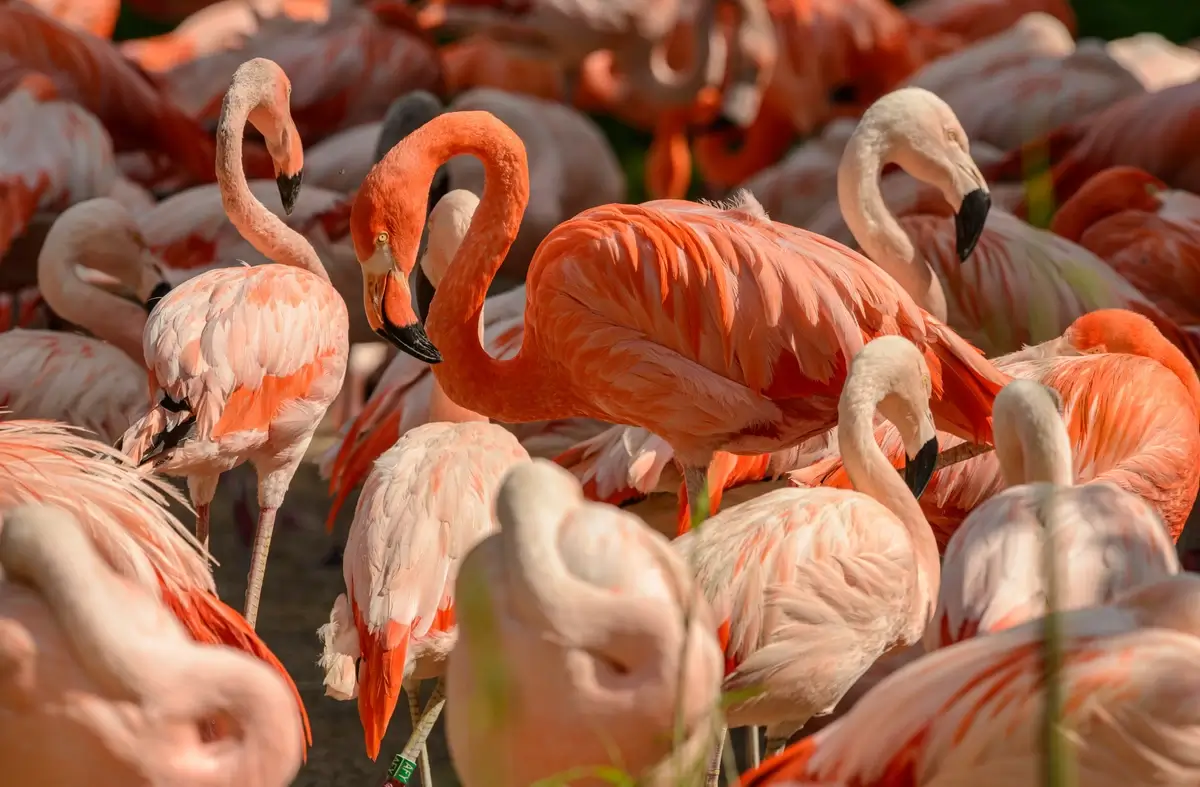
Petr Ganaj / Pexels
FAQ
What is Belize mostly known for?
Belize, a Central American gem, is primarily renowned for its stunning Belize Barrier Reef, the second largest in the world. The reef, with its plethora of marine life and crystal-clear waters, magnetizes divers and snorkelers globally. Furthermore, Belize is known for its rich Mayan heritage, evident in numerous archaeological sites scattered throughout its landscapes. Its unique blend of cultures, natural wonders, and warm hospitality make it a must-visit destination for many travelers.
What’s unique about Belize?
Belize stands apart due to its melange of cultures, languages, and ecosystems. It’s the only Central American country where English is the official language, even as its populace speaks a myriad of tongues, including Creole, Spanish, Garifuna, and Mayan. Its ecological diversity ranges from lush rainforests and misty mountains to pristine beaches and dense mangrove systems, all packed in a relatively small country.
What is amazing about Belize?
The amazing fact about Belize is its biodiversity. Despite its compact size, Belize boasts a plethora of habitats, from tropical rainforests teeming with jaguars and howler monkeys to coral atolls where nurse sharks and rays glide. Coupled with its commitment to conservation, with nearly half of its land under protection, Belize stands as a beacon for eco-tourism.
Is Belize a rich or poor country?
Economically, Belize is considered a lower-middle-income nation. It has faced challenges, including a high public debt and the impacts of climate change on its crucial agricultural and tourism sectors. However, Belize’s rich cultural heritage, natural resources, and untapped potential provide it with opportunities for future growth and development.
What is Belize rich in?
Natural resources are Belize’s treasure trove. It’s rich in arable land, producing crops like citrus, sugar, and bananas. Its marine ecosystems, including the expansive Belize Barrier Reef, are abundant in marine life. Additionally, Belize possesses significant untapped reserves of oil and minerals, and its rich cultural heritage adds to its wealth in terms of tourism potential.
What is most popular in Belize?
Tourism is one of Belize’s standout sectors, with destinations like Ambergris Caye, the Great Blue Hole, and ancient Mayan ruins like Xunantunich drawing visitors globally. Adventure tourism, diving, and cultural experiences form the bedrock of Belize’s popularity. The nation’s diverse festivals, including the Chocolate Festival and Garifuna Settlement Day, also play a role in its fame.
What is Belize also known as?
Historically, Belize was known as “British Honduras” before gaining its independence in 1981. Post-independence, it adopted the name “Belize”, derived from the Belize River, which itself is possibly named after the Mayan word “Belix,” meaning “muddy water.”
How old is Belize City?
Belize City, originally named “Belize Town,” was established in the mid-17th century by British lumber harvesters. It has a history spanning nearly 400 years, serving as the former capital and a vital hub for commerce and governance in the region.
What do Belizeans identify as?
Belizeans identify as a vibrant mix of ethnicities, celebrating their rich tapestry of backgrounds. This includes Creole, Garifuna, Mestizo, Maya, East Indian, Mennonite, and more. While they cherish their distinct roots, they also share a unified Belizean identity, bound by shared history, traditions, and national pride.
Why is Belize so different?
Belize’s uniqueness stems from its remarkable confluence of histories, cultures, and natural wonders. Its position, bridging Central America and the Caribbean, has made it a crossroads of empires and civilizations, from ancient Mayans to European colonizers. Unlike its Spanish-speaking neighbors, Belize has English as its official language due to its colonial past as British Honduras. This Central American nation is also home to a rich mosaic of ethnic communities, each contributing to the country’s diverse cultural tapestry. Adding to its distinction is its steadfast commitment to conservation, with a significant portion of its territory dedicated to reserves and sanctuaries. All these facets combine, making Belize distinct in its essence and allure.


